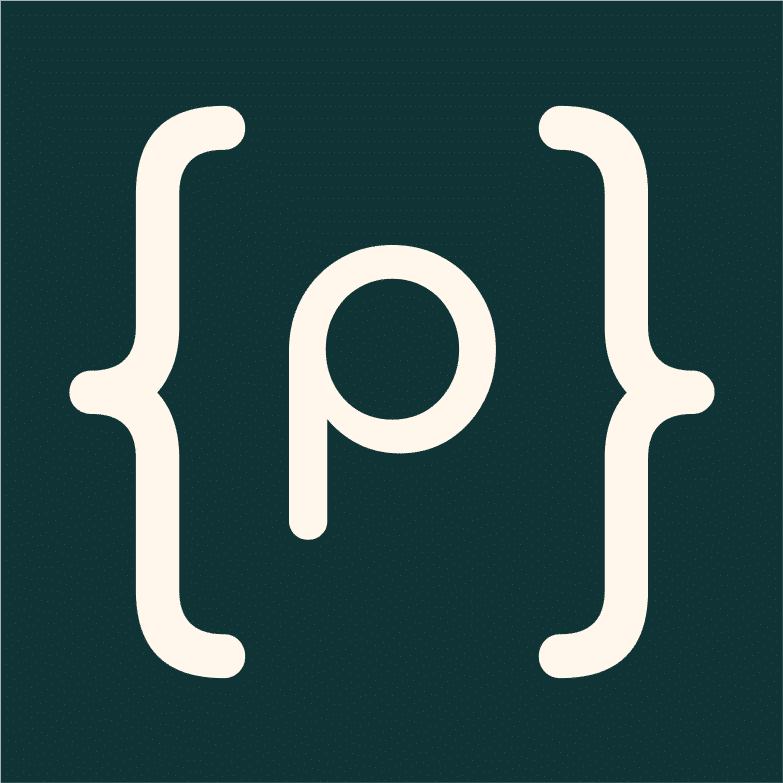Disclaimer: This project was completed during Rob’s tenure as the Digital Project Manager and Engineering Team Lead at Pixels 360 (2017-2021). JCHS was not, and is not, a client of Petrin Development Services.

Overview
The Harvard Joint Center for Housing Studies (JCHS) represents one of the most influential housing research institutions in the United States, providing critical analysis that shapes national housing policy and market understanding. As the nation’s premier source for housing research and data analysis, JCHS publishes comprehensive annual reports including “The State of the Nation’s Housing” that serve as definitive resources for policymakers, researchers, and industry professionals nationwide.
The organization had built its reputation on delivering sophisticated data visualization and interactive analysis tools that made complex housing market trends accessible to diverse audiences. Their annual reports feature customized interactive graphs and charts that have become the gold standard for housing data presentation, allowing users to explore decades of housing trends through intuitive, hover-enabled visualizations.
However, JCHS faced a critical challenge: their digital infrastructure couldn’t support the sophisticated content relationships and cross-platform integration required for their expanding research publication workflow. The project represented a high-stakes digital transformation for one of Harvard’s most visible research centers, requiring seamless integration between multiple content management systems while maintaining the interactive data visualization capabilities that defined their brand.
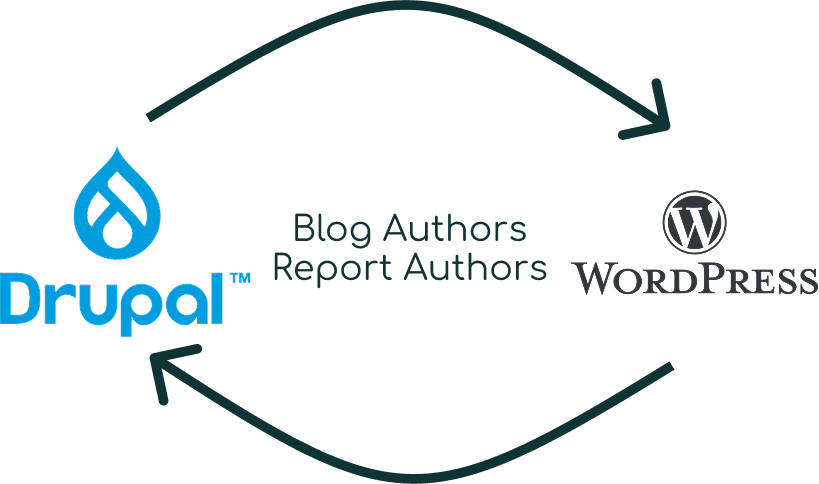
The Challenge
The JCHS project represented a complex convergence of technical, organizational, and stakeholder management challenges that tested the limits of traditional content management approaches. What initially appeared to be a straightforward website redesign had evolved into a multi-platform integration challenge with significant reputational stakes for both the client and development team.
Project Inheritance and Stakeholder Relations: The project had experienced significant management difficulties in its initial phases under previous leadership, creating a strained relationship between JCHS and the development team before current project management took over. The prestigious Harvard affiliation meant that any missteps would have broad professional implications, while tight deadlines left little room for relationship repair or scope adjustments. The incoming project leadership inherited not only technical challenges but also the critical task of rebuilding client confidence while delivering on ambitious timeline commitments.
Architectural Complexity: The project’s technical foundation presented an unusual challenge: the client required a dual-platform architecture combining Drupal for the primary website with WordPress managing the blog functionality. This architectural decision, established before current project leadership’s involvement, created significant integration complexities that extended far beyond simple content syndication.
Cross-Platform Content Relationships: The most technically demanding aspect involved creating sophisticated content relationships between the two platforms. Rather than maintaining separate, isolated systems, JCHS required deep integration where Drupal research content could relate programmatically to WordPress blog posts, and vice versa. This included synchronized author profiles, cross-platform content recommendations, and unified search functionality across both systems.
Interactive Data Visualization Requirements: JCHS’s reputation depended heavily on their sophisticated data presentation capabilities. The new platform needed to support complex interactive charts and graphs with advanced hover functionality, custom data visualization tools, and the ability to embed these elements seamlessly across both content management systems while maintaining consistent user experience and performance standards.
The core challenge became: How to deliver a unified, high-performance platform for one of Harvard’s most visible research centers while managing complex cross-platform integration requirements under compressed timelines and elevated stakeholder expectations?
The Solution
The solution approach centered on sophisticated cross-platform integration while simultaneously executing stakeholder relationship recovery—a dual challenge requiring both technical innovation and strategic project management under high-pressure conditions.
Technology Stack & Custom Development
The JCHS platform transformation required extensive custom development to bridge two distinct content management systems while maintaining enterprise-grade performance and the sophisticated data visualization capabilities that defined the organization’s research publications.
Core Platform:
- Drupal 7 – Primary content management system serving as the foundation for research publications, reports, and institutional content
- WordPress 5.x – Dedicated blog platform with custom endpoint development for cross-platform integration
- Custom API Development – Proprietary integration layer enabling real-time content syndication and author synchronization
Cross-Platform Integration:
- Custom WordPress REST API endpoints designed specifically for Drupal consumption
- Bidirectional content relationship engine enabling programmatic connections between research publications and blog content
- Synchronized author management system with cross-platform ID mapping and profile consistency
- Unified taxonomy and tagging architecture spanning both content management systems
Interactive Data Visualization:
- Custom interactive chart and graph components with advanced hover functionality
- Responsive data visualization framework optimized for both desktop and mobile experiences
- Embeddable visualization tools designed for seamless integration across both platforms
- Performance-optimized rendering for complex housing market data sets
Integration & Performance:
- Real-time content synchronization between WordPress and Drupal systems
- Custom caching strategies to maintain performance across dual-platform architecture
- Unified search functionality spanning both content repositories
- Cross-platform analytics and user experience tracking
Stakeholder Relationship Recovery: The immediate priority involved rebuilding client confidence through transparent communication, realistic timeline management, and demonstrable progress milestones. This required establishing new project governance structures and regular stakeholder check-ins to ensure alignment while managing the technical complexities of the inherited architecture.
Cross-Platform Integration Architecture: The core technical challenge required developing a robust integration layer between Drupal and WordPress that went far beyond traditional content syndication. The solution involved creating custom API endpoints within WordPress to expose blog content, author information, and metadata to the Drupal system in real-time.
Unified Author Management System: One of the most complex requirements involved synchronizing author profiles across both platforms. The solution implemented a cross-platform author ID synchronization system that ensured consistent author representation whether content originated from Drupal research publications or WordPress blog posts. This enabled seamless author attribution and cross-platform content recommendations.
Advanced Content Relationship Engine: Rather than treating the two platforms as separate entities, the solution created programmatic relationships between Drupal research content and WordPress blog posts. This included automated content suggestions, related article functionality, and unified tagging systems that allowed users to discover relevant content regardless of its originating platform.
Interactive Data Visualization Integration: The solution maintained JCHS’s signature interactive data presentation capabilities through custom chart and graph implementations with advanced hover functionality. These interactive elements were designed to embed seamlessly across both content management systems while maintaining consistent performance and user experience standards.
Unified User Experience: Despite the dual-platform architecture, the solution created a cohesive user experience where visitors could navigate between research publications and blog content without encountering platform boundaries or inconsistent functionality.
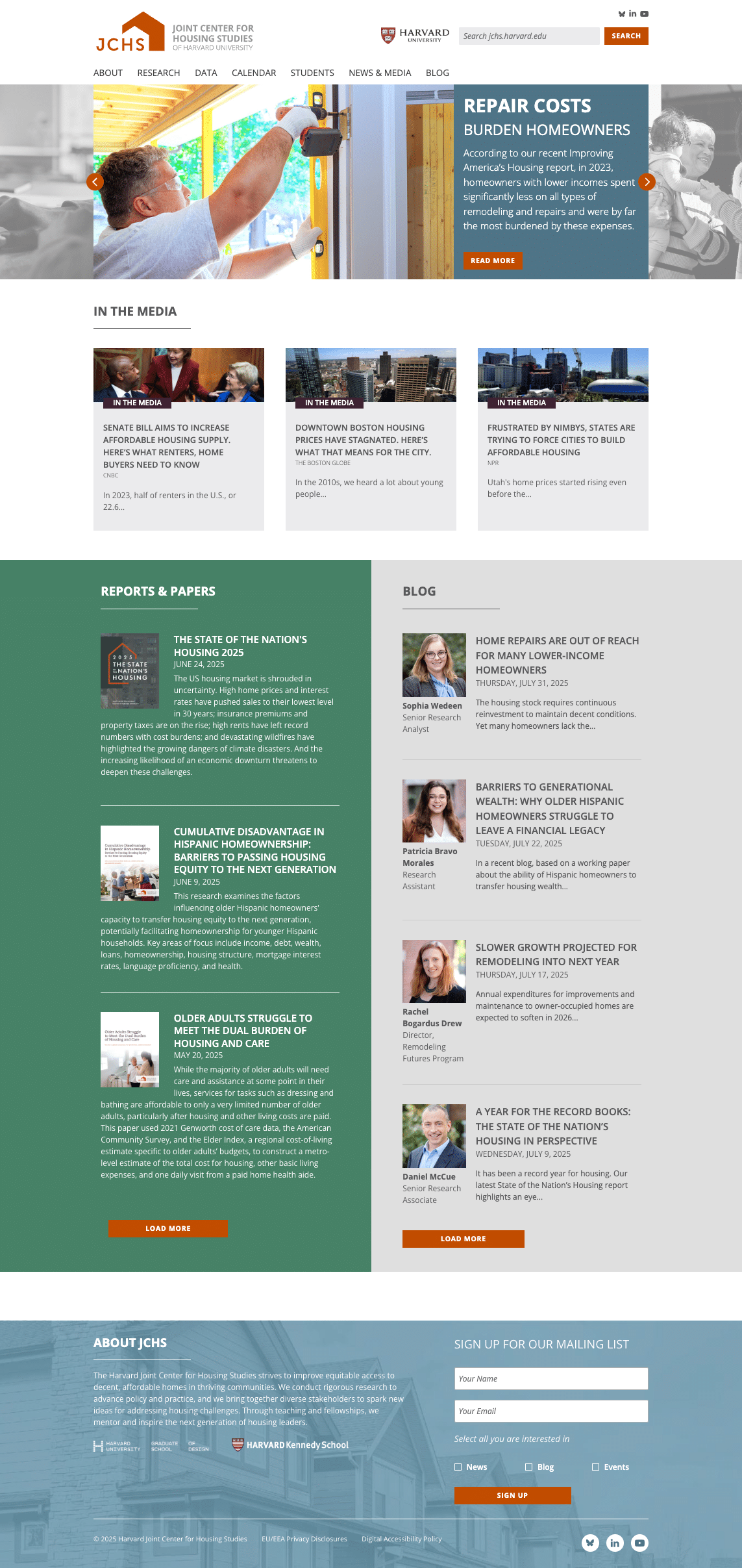
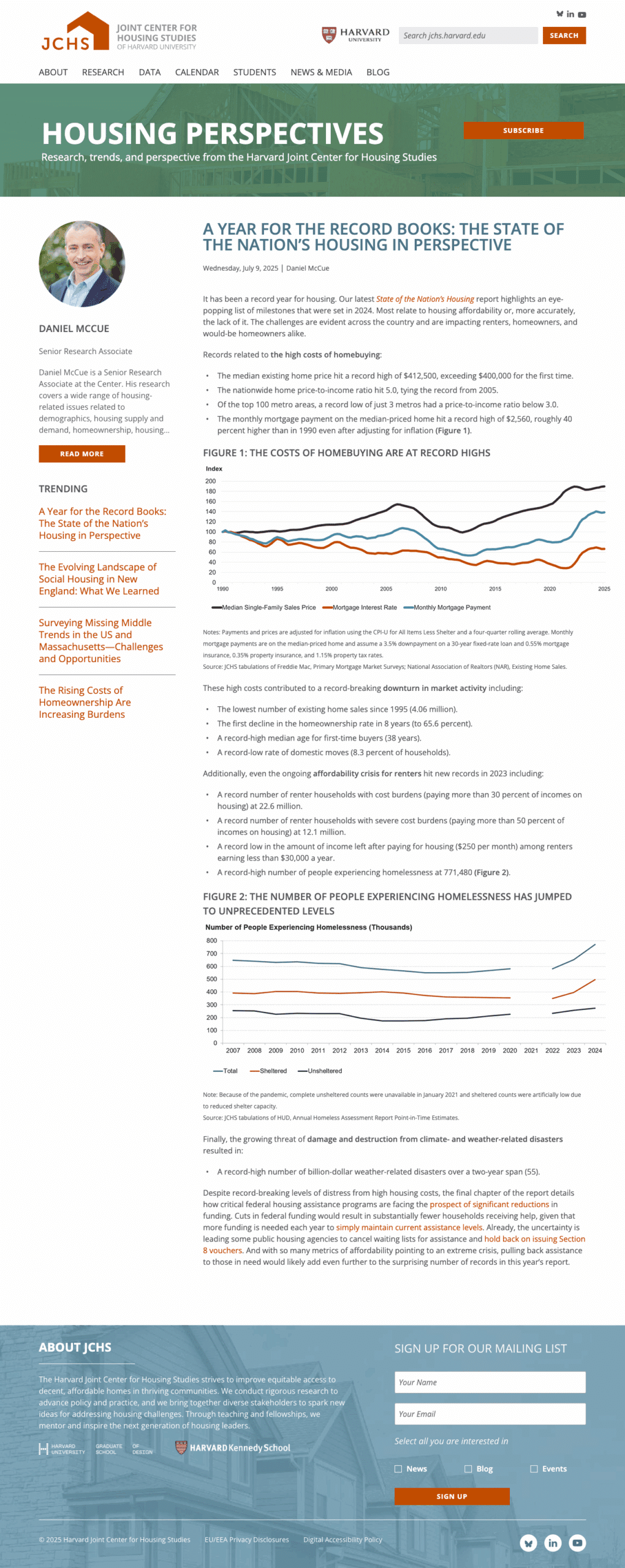
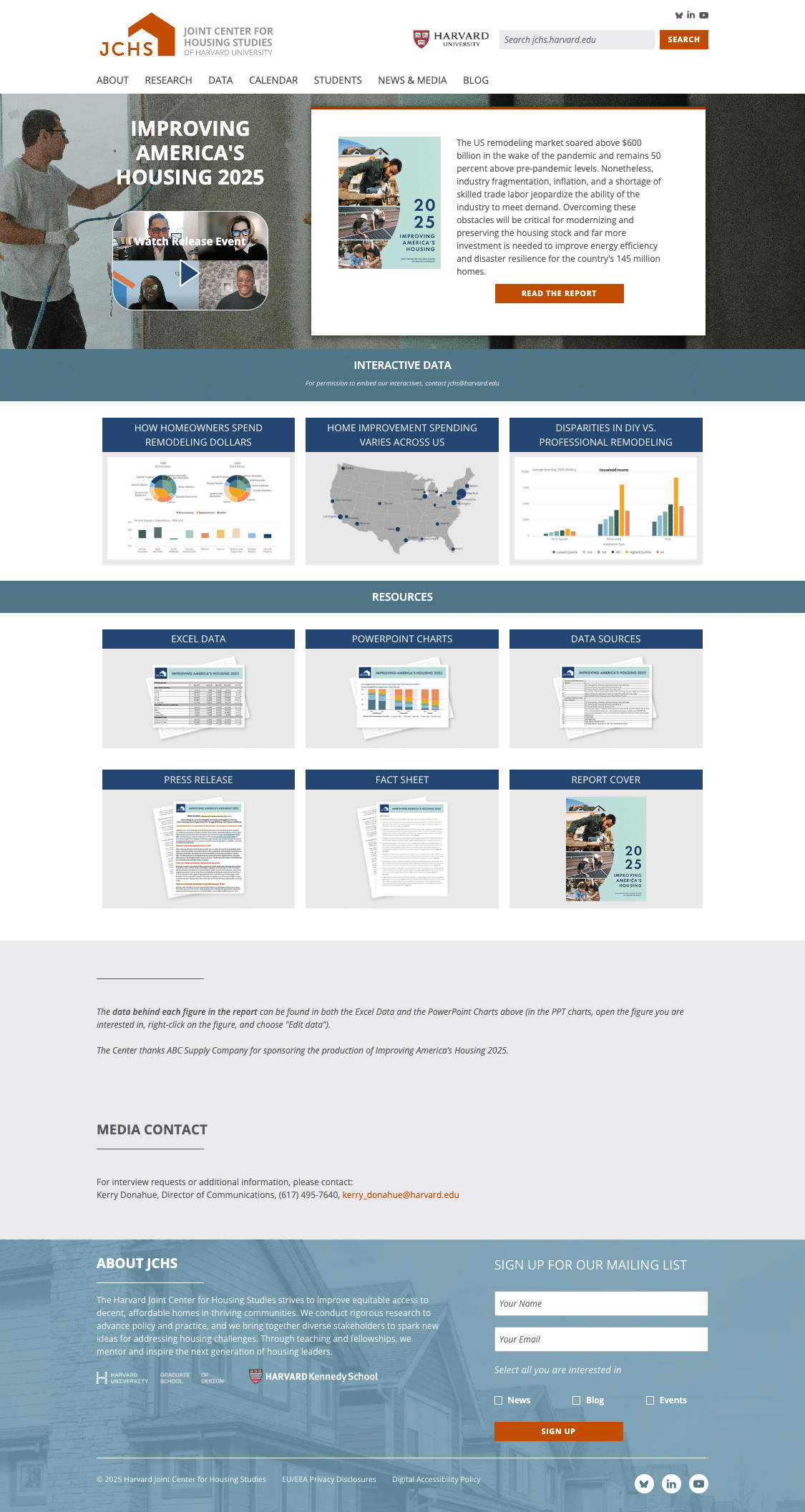
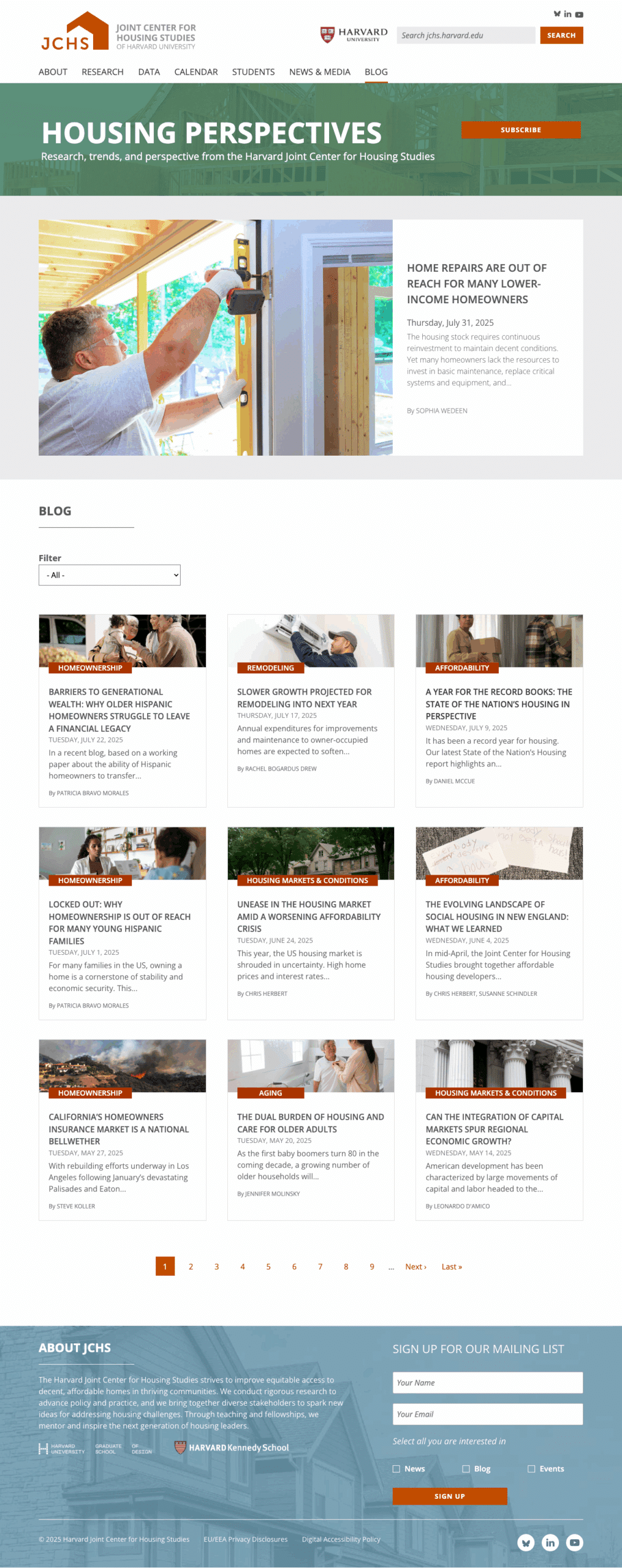
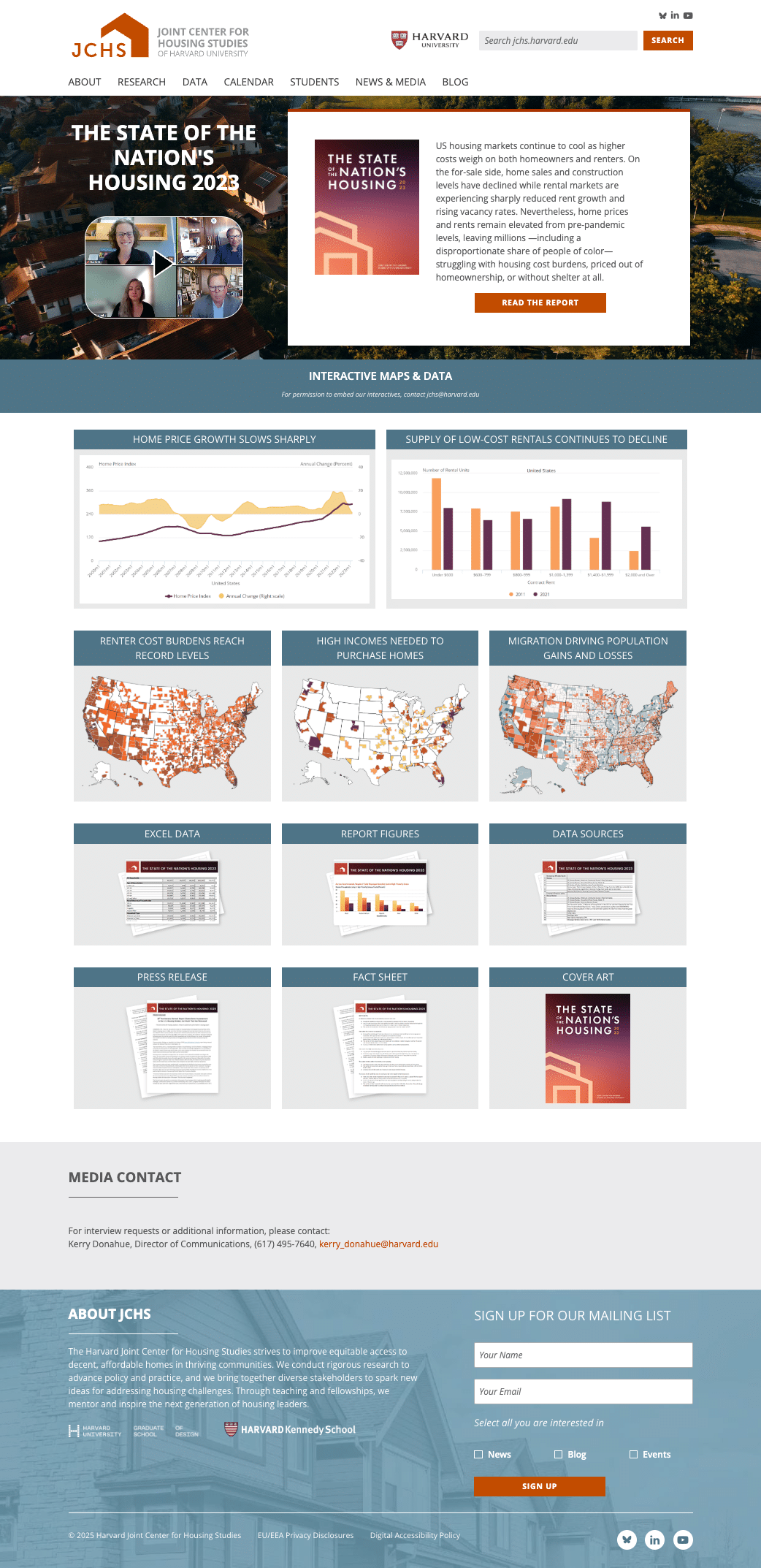
The Outcome
The JCHS project demonstrated successful recovery from challenging project circumstances while delivering a sophisticated dual-platform solution that continues to serve one of Harvard’s most prominent research centers nearly a decade after implementation.
Client Relationship Recovery: The project team successfully rebuilt stakeholder confidence through transparent project management and consistent delivery milestones. The implementation concluded with comprehensive training sessions for JCHS authors and administrative staff, resulting in a satisfied client relationship that validated the recovery approach under high-pressure circumstances.
Technical Architecture Durability: The custom cross-platform integration has proven remarkably resilient, continuing to operate effectively as originally designed nearly ten years post-launch. This longevity validates the architectural decisions and custom development approach, particularly given the rapid evolution of both Drupal and WordPress ecosystems during this period.
Sustained Research Publication Workflow: JCHS continues to utilize the platform for their critical research publications, including their flagship annual reports that influence national housing policy. The interactive data visualization capabilities remain central to their content strategy, enabling sophisticated presentation of housing market trends and analysis that maintains their reputation as the premier source for housing research.
Professional Development Impact: The project served as a proving ground for complex stakeholder management under pressure while delivering technically sophisticated solutions. The successful navigation of inherited project challenges while maintaining technical excellence demonstrated the effectiveness of combining relationship recovery with advanced development capabilities.
Platform Legacy: The continued operation of the JCHS platform nearly a decade after launch showcases the durability of thoughtful technical architecture decisions and the value of custom development approaches for specialized institutional requirements. The platform’s ability to support ongoing research publication workflows while maintaining its interactive data visualization capabilities validates the strategic approach taken during the challenging development period.



